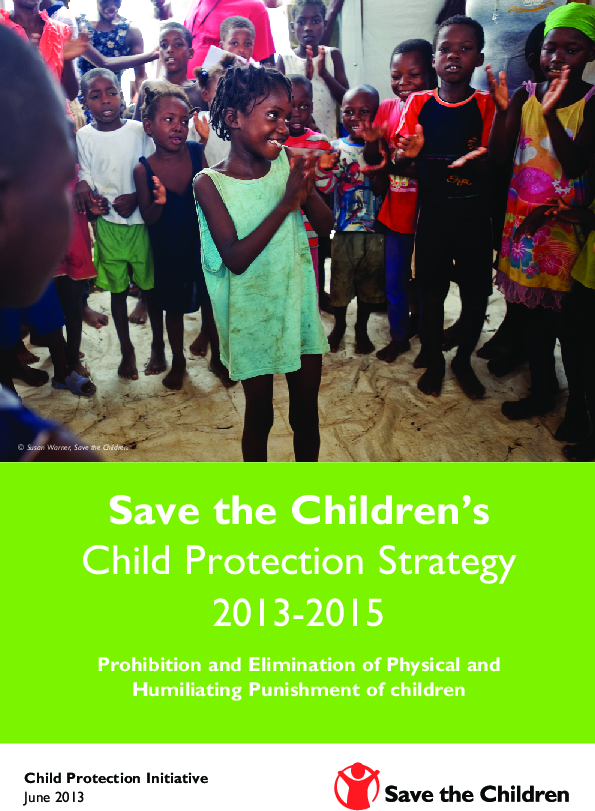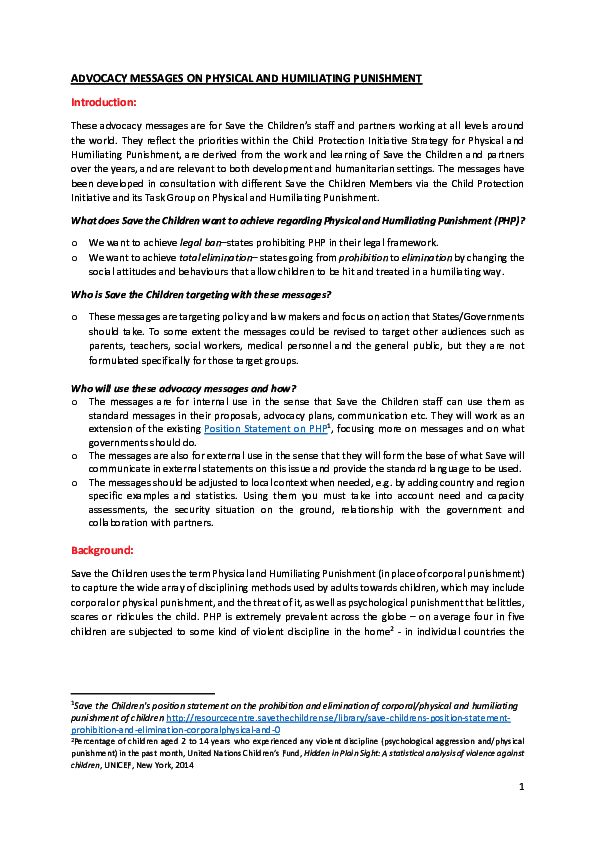
Policies, Standards, and Strategies
Save the Children’s Child Protection Strategy 2013 – 2015. Prohibition and Elimination of Physical and Humiliating Punishment of children
Publication year:
2013
English
Format:
pdf (2.8 MiB)
Publisher:
Save the Children
Save the Children (SC) has vast experience of working on the elimination of Physical and Humiliating Punishment (PHP) and it is part of SC’s priority areas of work. The aim of SC’s work to explicitly prohibit and eliminate the physical and humiliating punishment of children is to contribute to children’s right to be safe and protected from all forms of violence. In 2012, PHP became one of four of SC’s global child protection priorities included under the Child Protection Initiative (CPI). The strategic goal for this priority area is that by 2015, 9.2 million children will be directly and indirectly reached by all Save the Children interventions to end physical and humiliating punishment. In line with this strategy and by 2015, SC aims to influence governments to eliminate physical and humiliating punishment in all settings, including homes, schools, justice systems and care settings.
Ending corporal punishment strongly contributes to Save the Children’s Child Protection Breakthrough: “All children thrive in a safe family environment and no child is placed in harmful institutions”. Interventions aimed at keeping children safe have a strong focus on addressing physical and humiliating punishment, notably advocacy for a legal ban in all settings (home, school, alternative care settings and penal system), awareness-raising and promotion of positive discipline. Within the breakthrough results framework, the work on the issue contributes to the following objectives: 1.Legal and policy change (Governments eliminate physical and humiliating punishment in all settings) ; 2. Legal and policy change (Governments eliminate physical and humiliating punishment in all settings; 3. Behaviour change/service delivery (Trained parents/caregivers or teachers practice positive discipline in targeted programme areas).
Read full abstract
View & Download
Document information
Publisher
Format
Content type
Rights
© Author/Publisher
Found a mistake? Help us improve!
If you have noticed a document assigned to the wrong author or any other inaccuracies, let us know! Your feedback helps us keep our data accurate and useful for everyone.
Related Documents
Share
Link

